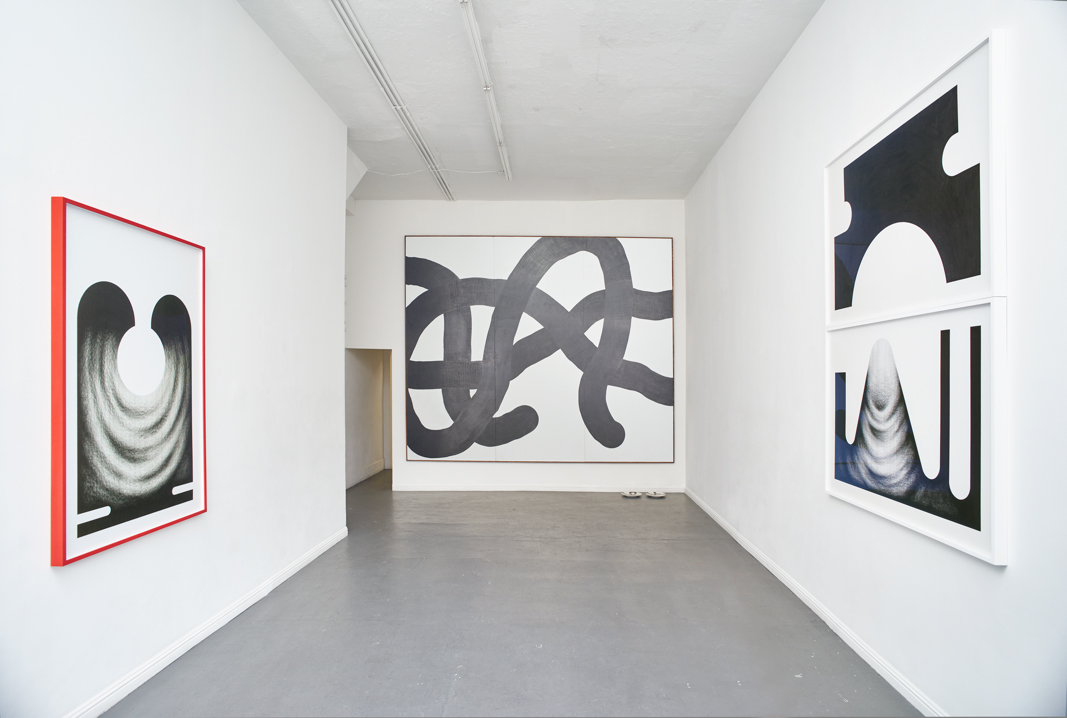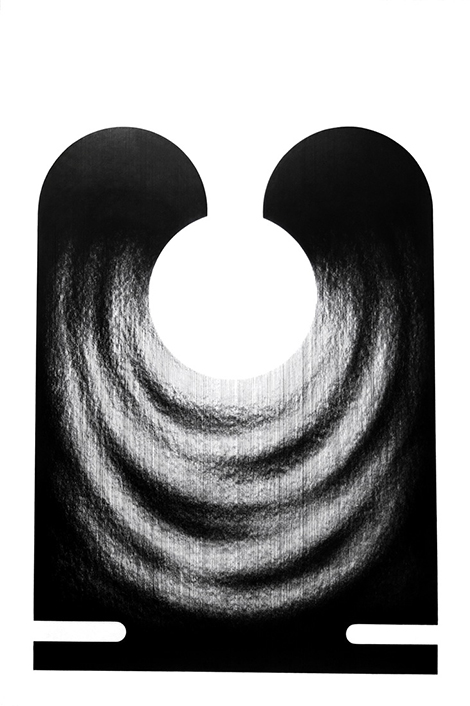Our experience of the natural world is mediated through filters both internal and external. The scientific term “Haptic Rendering” refers to a robotic interface that allows users to “touch” virtual objects. Francesco Igory Deiana, who recently presented a series of reductive, large-scale 2- and 3D works in graphite, executed on cardstock, gesso and found objects, uses this term as a point of reference to explore visual and tactile stimuli, as filtered through a digital lens.
When Deiana, from Milan, Italy, first arrived in San Francisco with limited resources, the medium of ball point pen ink appealed to the artist for practical reasons. Later, Deiana moved on to making diptychs, with a drawing, executed in ball point pen ink on one panel, and on the other a photograph taken of a computer screen, the process creating a wave-like distortion or moiré pattern. In his latest series of works, “Haptic Render,” Deiana has taken this process a step farther, now choosing to reproduce the digital distortion in intricate and painstakingly rendered drawings in graphite.
With a quasi-scientific feel to the work, numerous natural and artificial processes or objects are suggested or inferred, but stripped down to the point where any allusions one might draw are at best conjecture—like seeing sheep in a cloud formation.
Photoshop Brushstroke (all works 2015), 10 x 12-foot, offers an undulating image like coils of rope or writhing serpents. Here the artist began with a rather clumsy squiggle using a digital brush, yet at this scale it becomes imposing, with some of the dynamic presence of a Franz Kline or a Robert Motherwell. Significantly, the heroic gesture which those artists would have made with a large brush and broad strokes is here instead the product of innumerable tiny strokes and a layered conceptual process.

Francesco Igory Deiana, Untitled (Haptic 05), 2015, photo courtesy of CULT | Aimee Friberg Exhibitions.
Other pieces, such as Untitled (Haptic 05) have a striated appearance that could be wrinkled skin or ripples in water, seen as though behind a veil. Precisely parallel straight lines ground these filmy images. Arch and keyhole shapes are a recurring device, giving the work an architectural feel as well.
While these works are clearly about formal elegance, on one level, at least, they are informed by the artist’s background working with humble materials in a very DIY manner. Deiana also had the good fortune in San Francisco to work with artists Clare Rojas and Barry McGee. The artist also cites the late painter Jay DeFeo as an influence. Clearly, the connection to her minimal palette and fascination with simple geometric forms makes absolute sense, along with the devotion to obsessive process—DeFeo famously spent eight years on her iconic painting, The Rose (1958-66).
Pathos and absurdity accompany the Herculean lengths to which Deiana will go to replicate a small bit of digital distortion, yet this gesture is firmly grounded in the history of drawing from a model. Deiana’s drawings offer the viewer a commentary on the way in which our increasing dependence on the computer and its simulacra has eclipsed the primacy of human relationships.



















0 Comments